Tato Architects / Yo Shimada
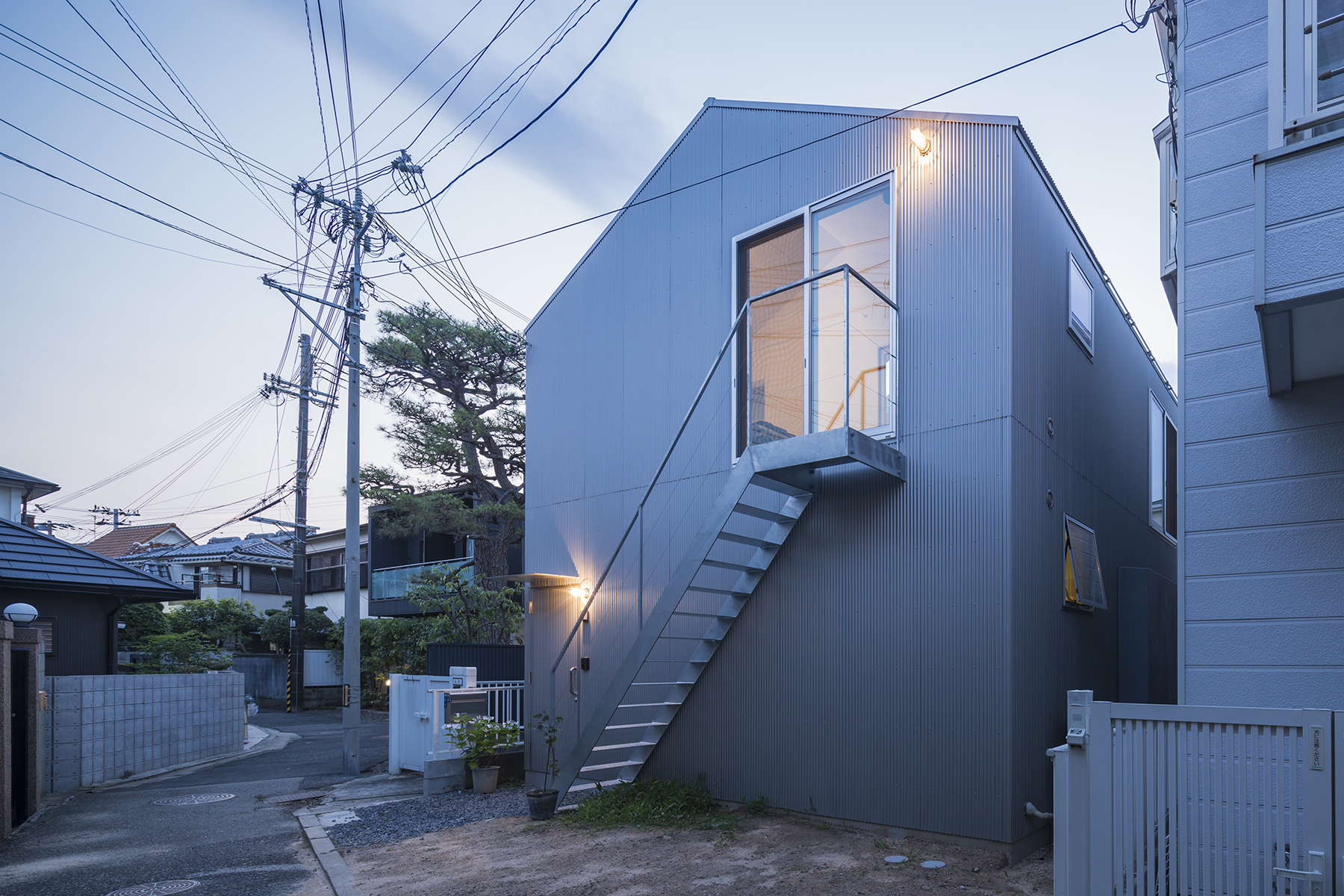
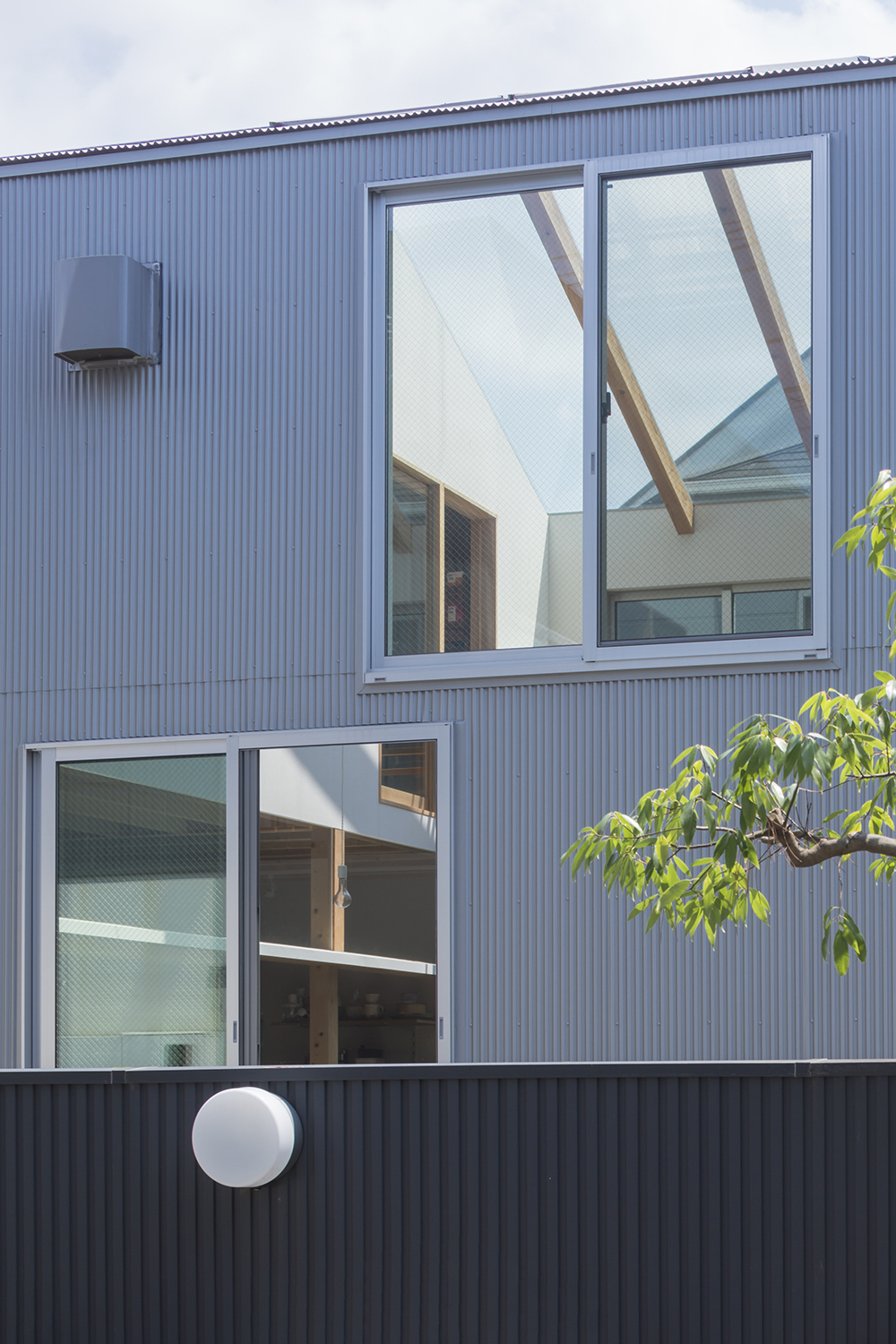
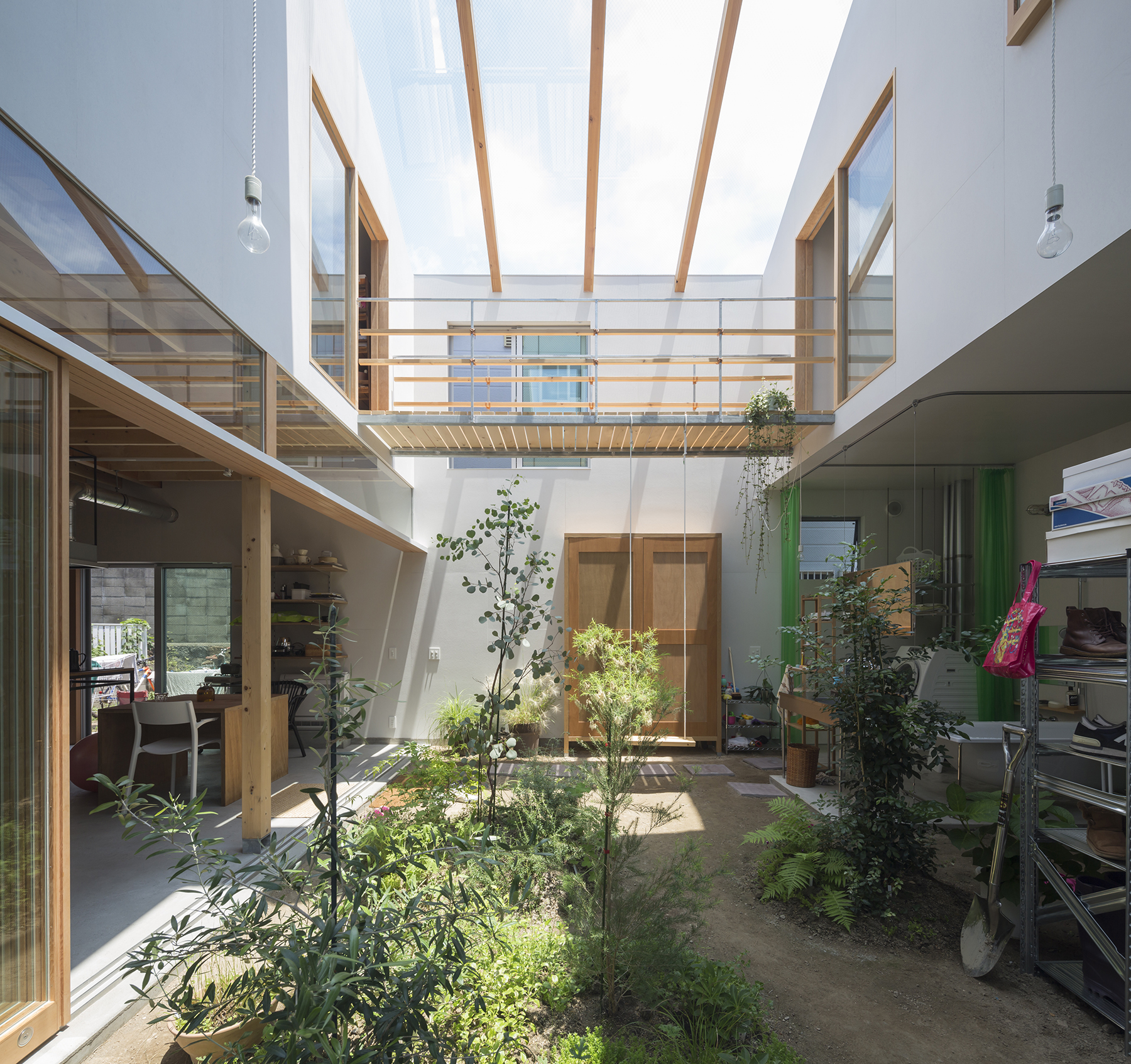
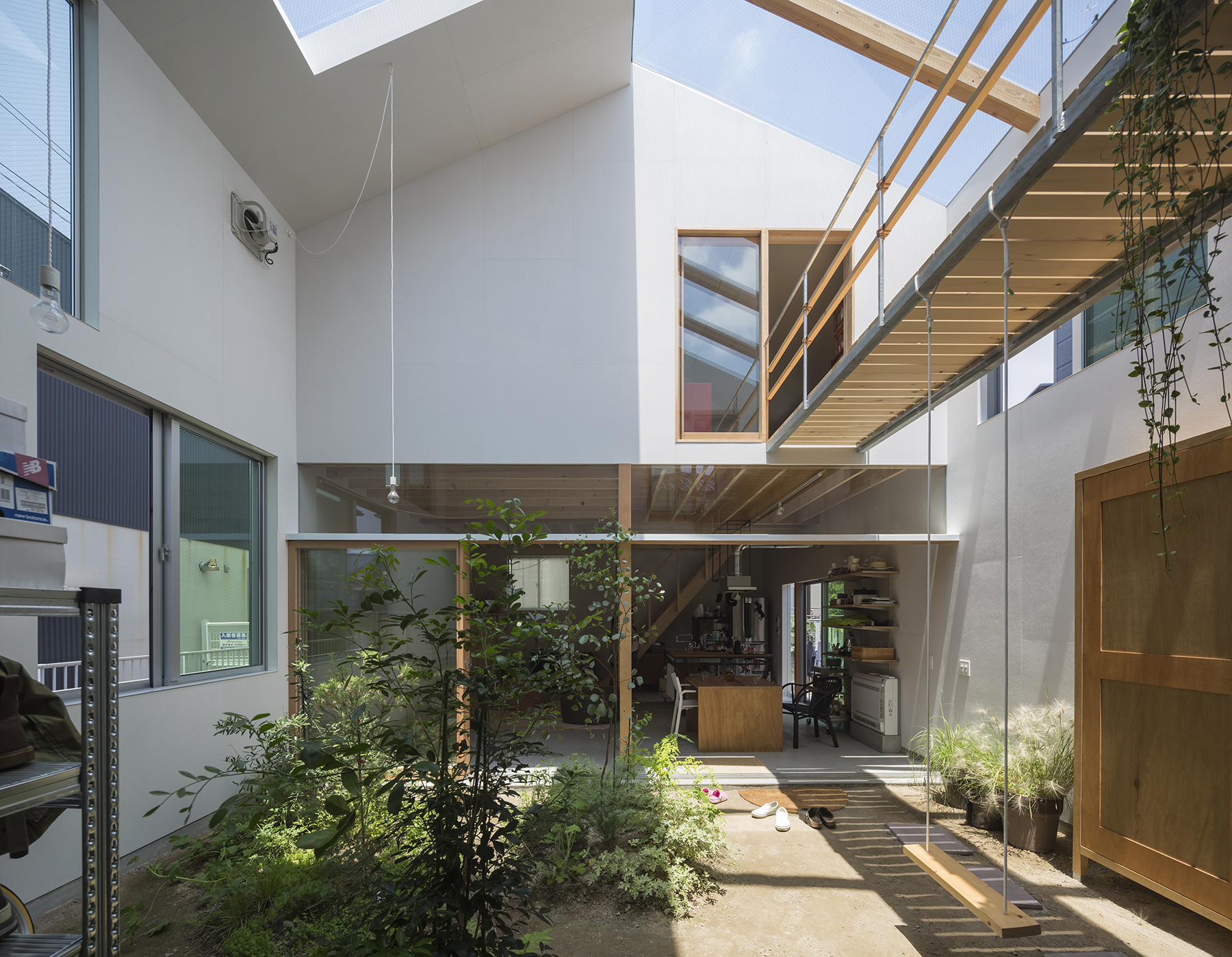
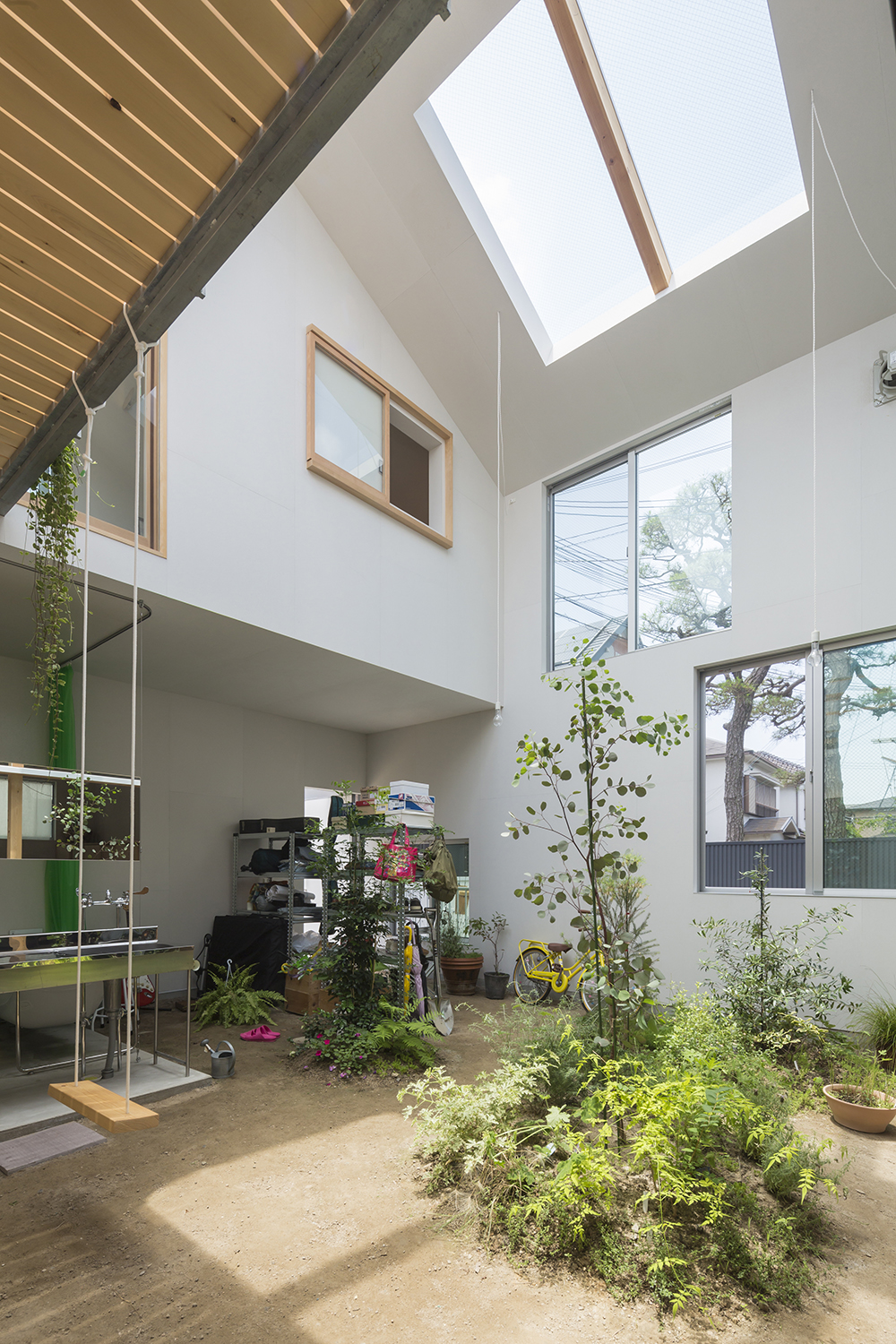
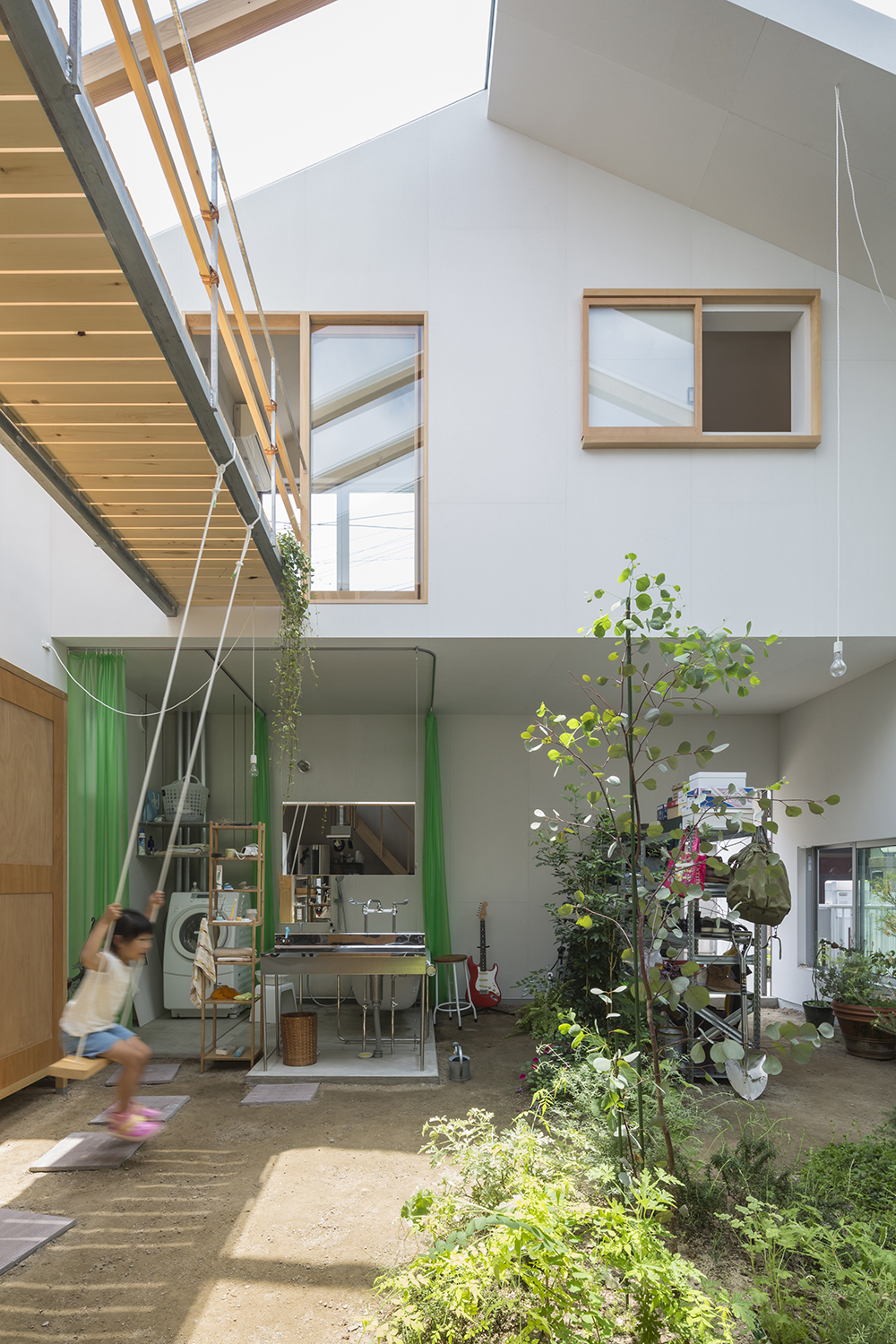
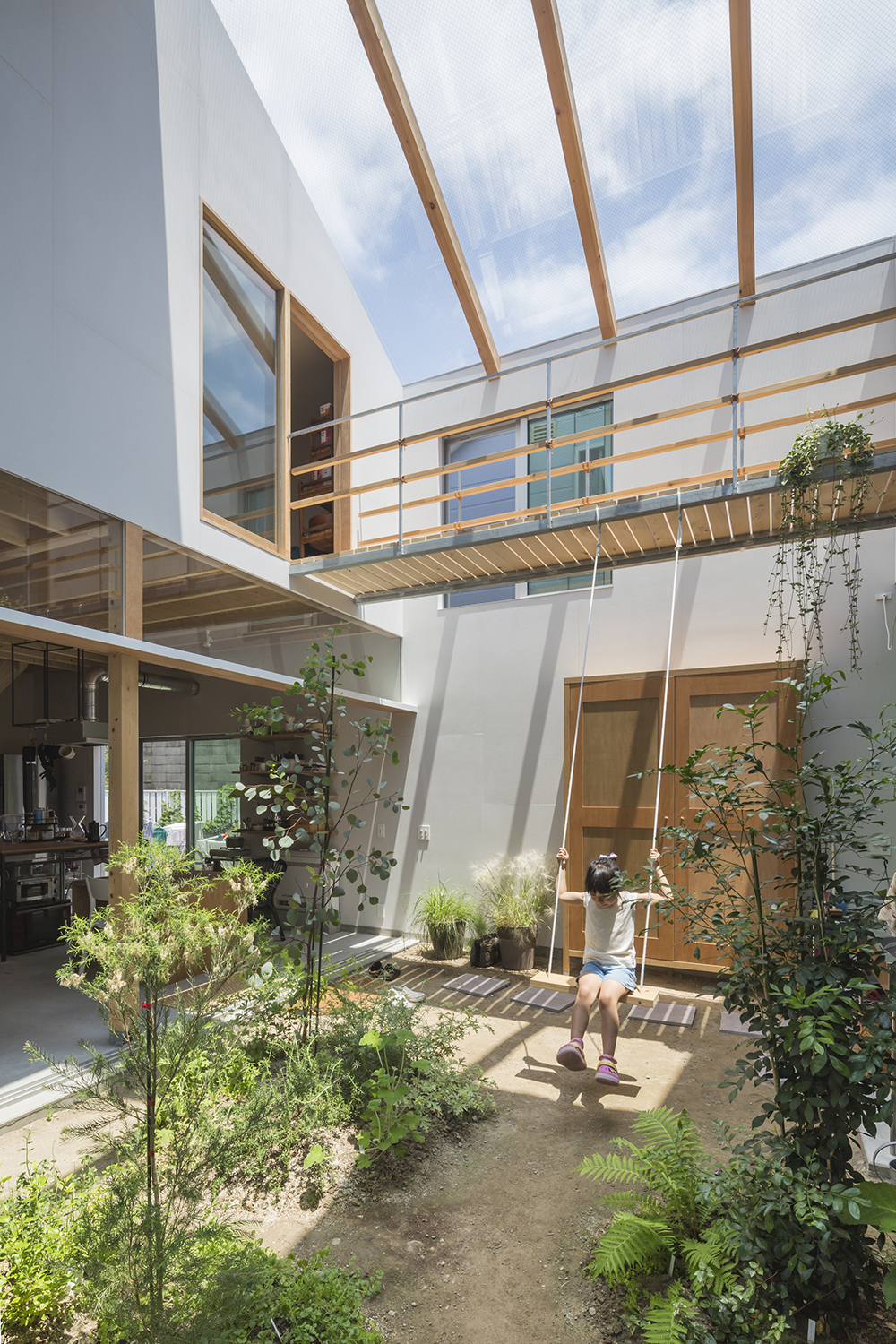
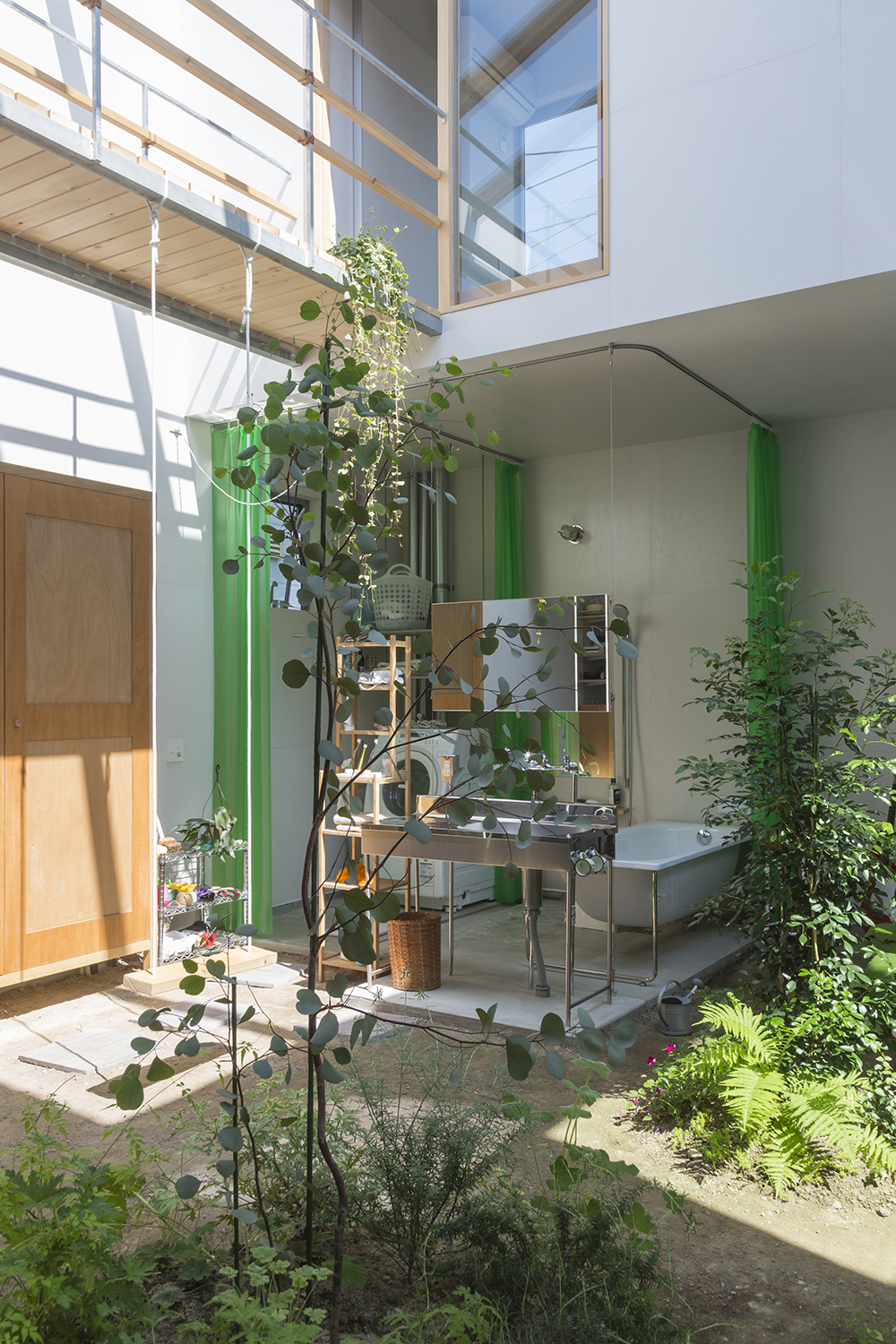
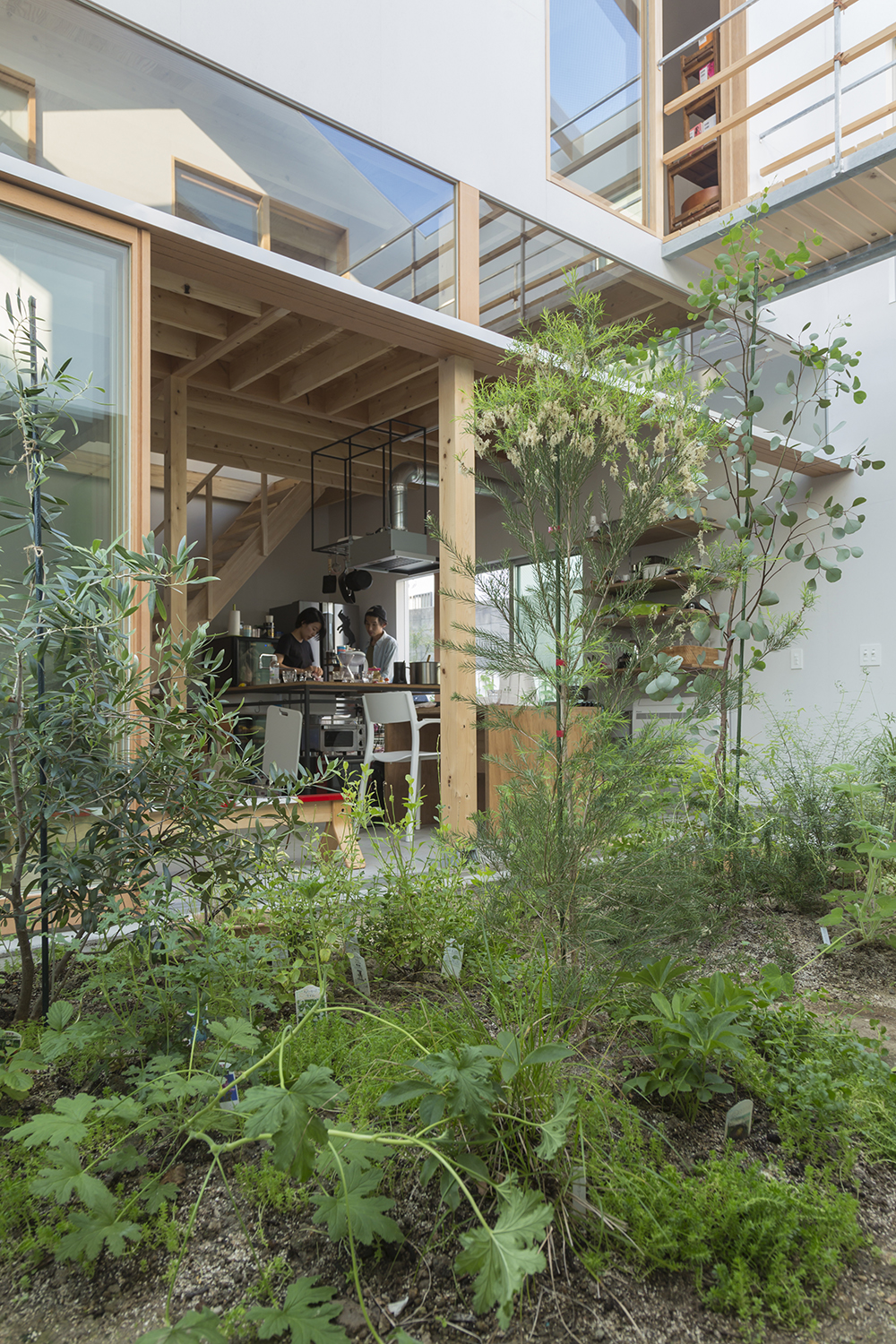
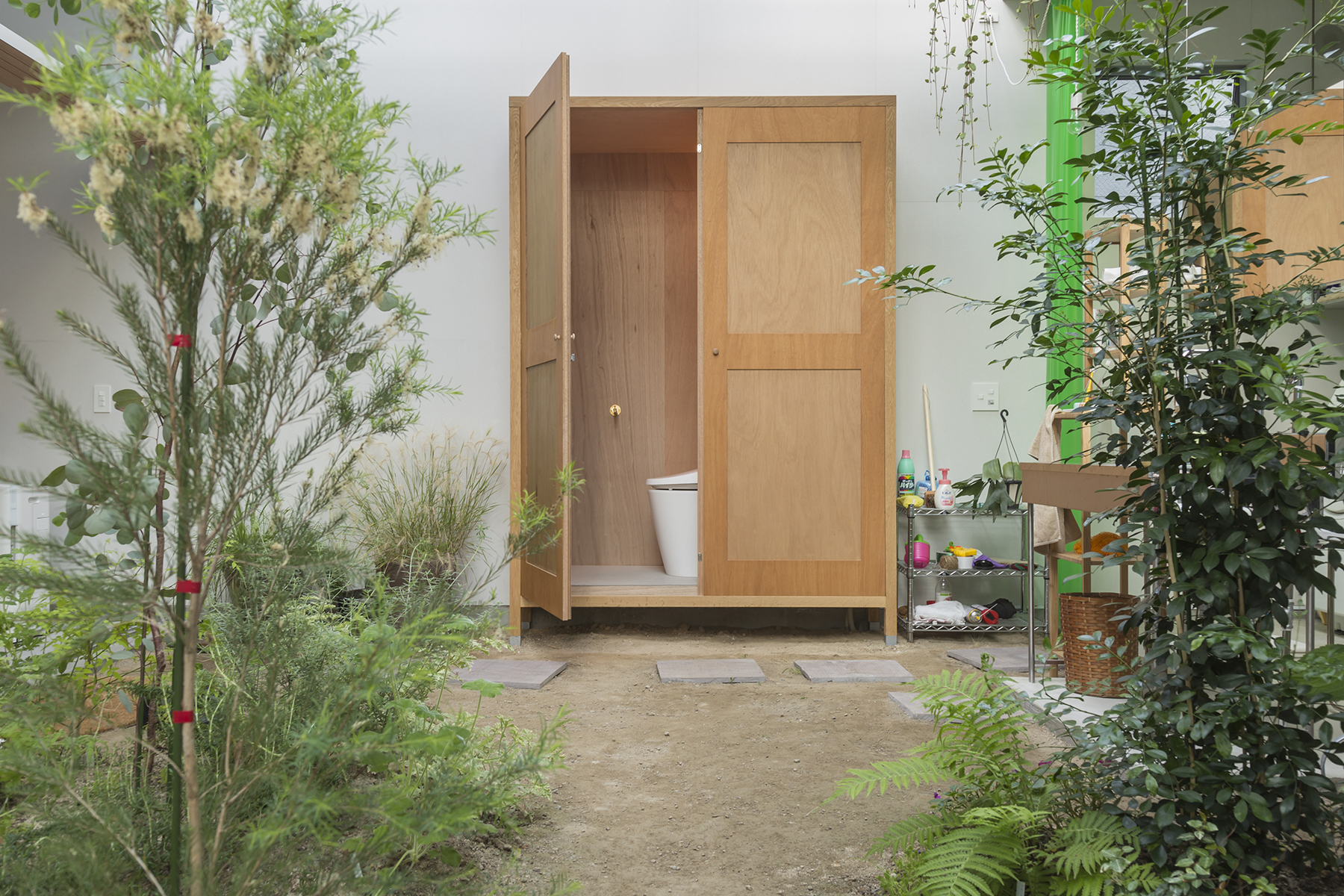
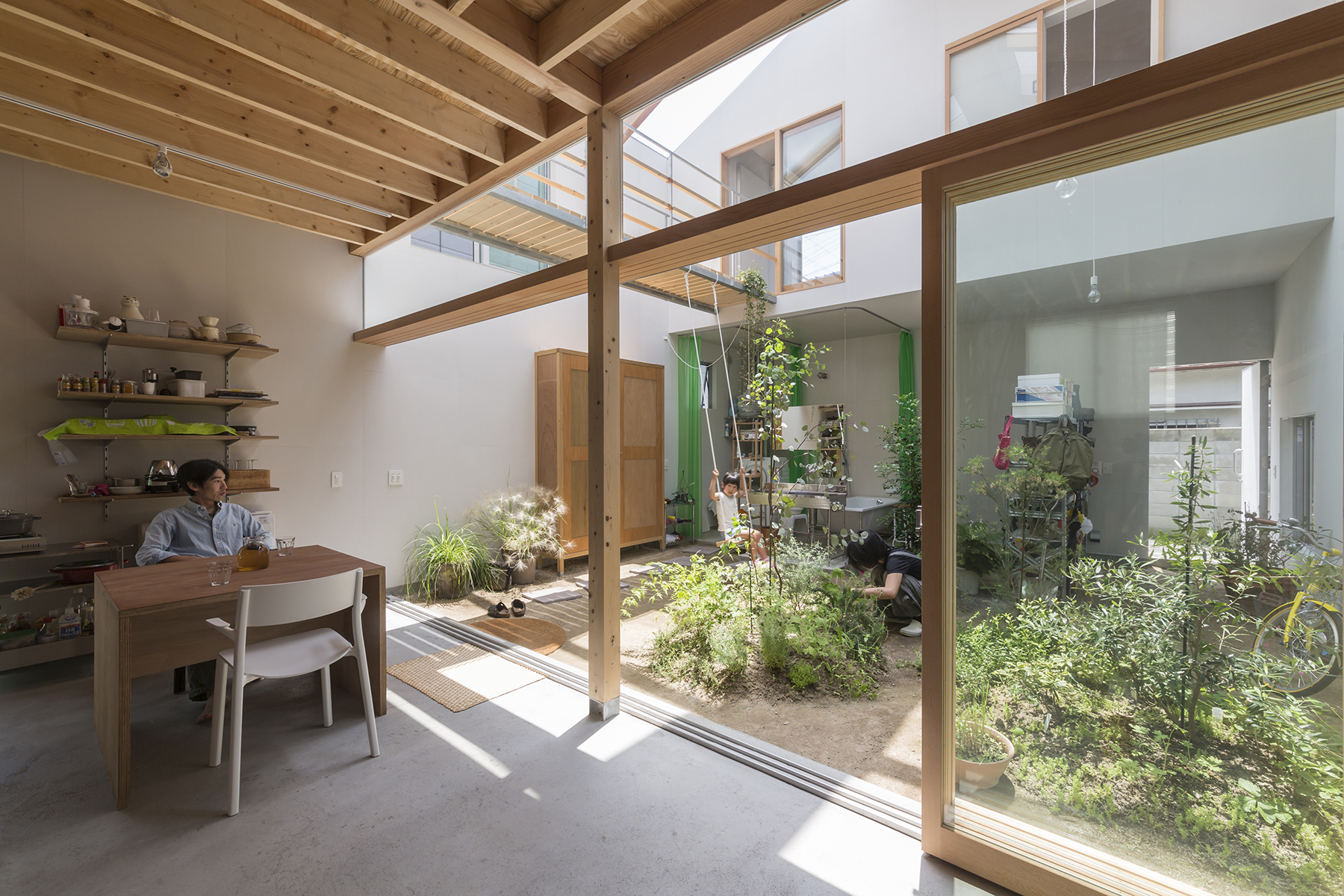
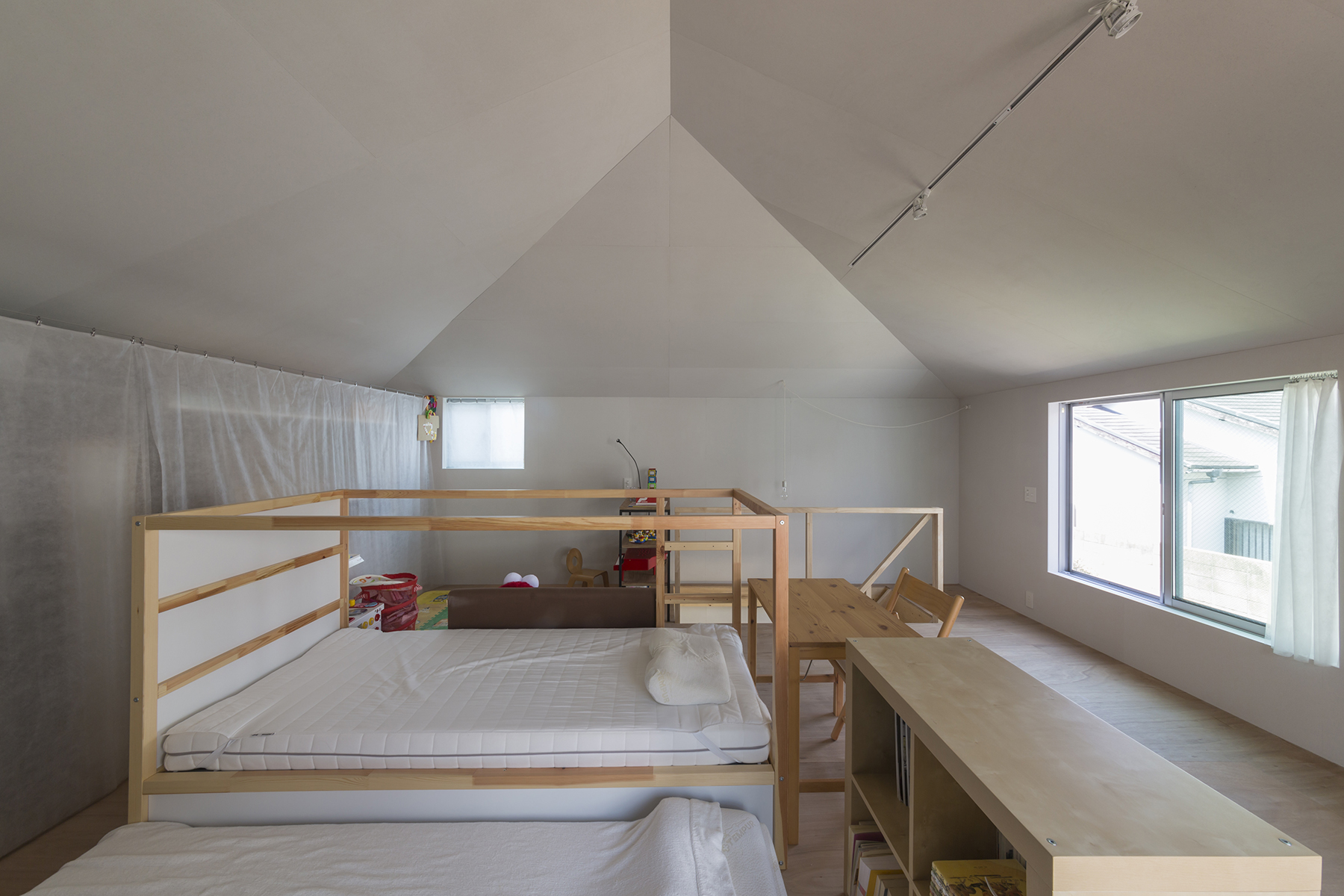
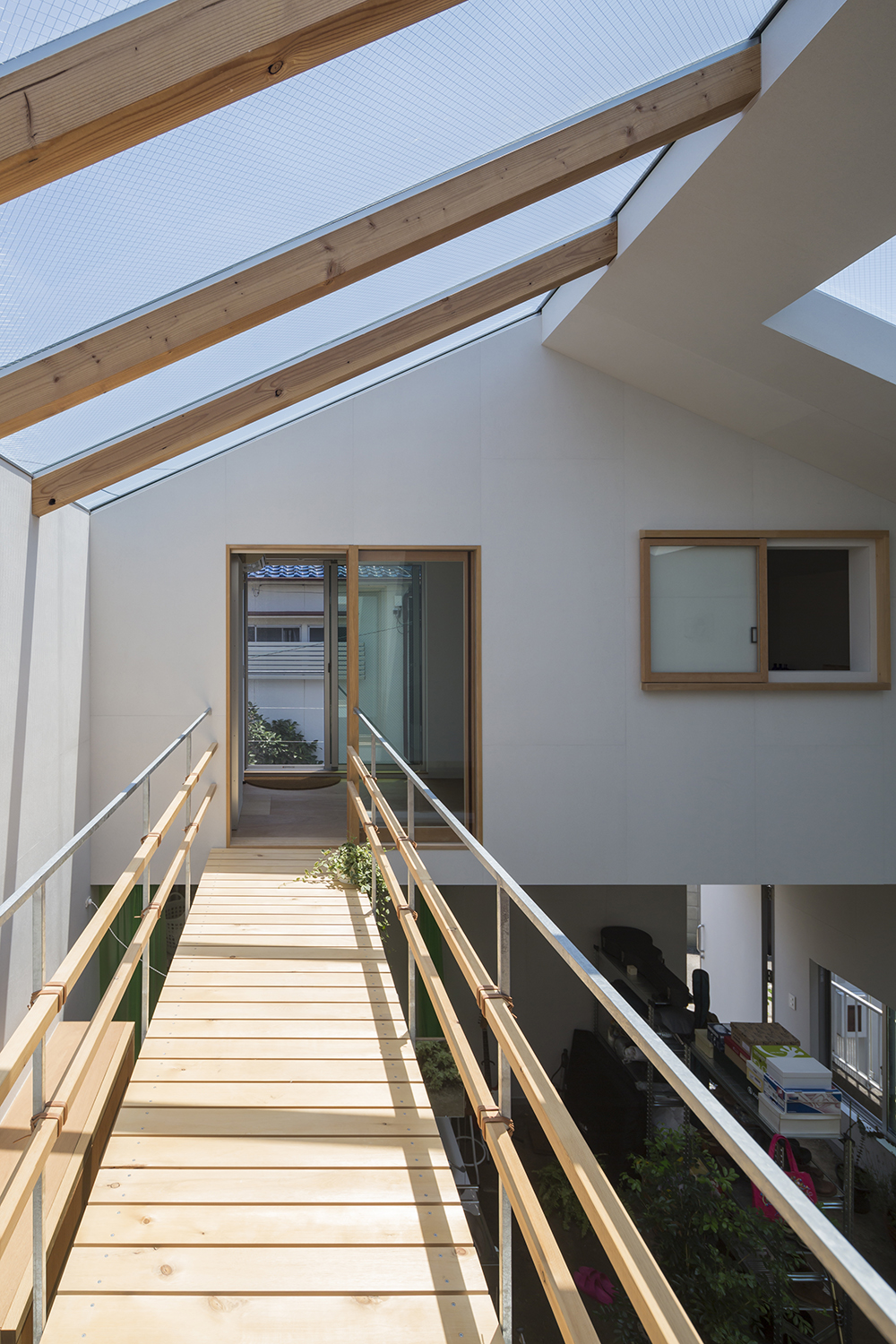
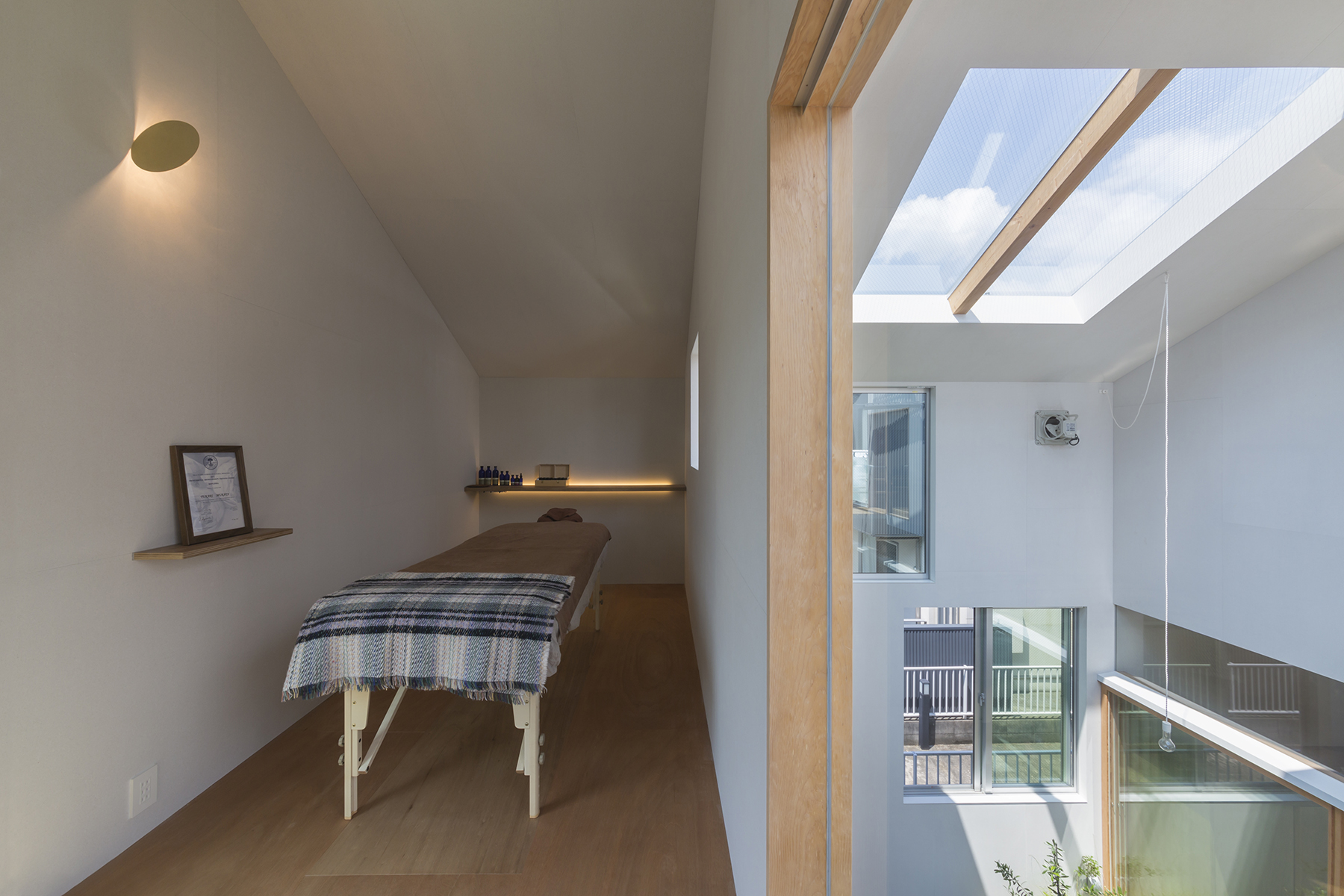
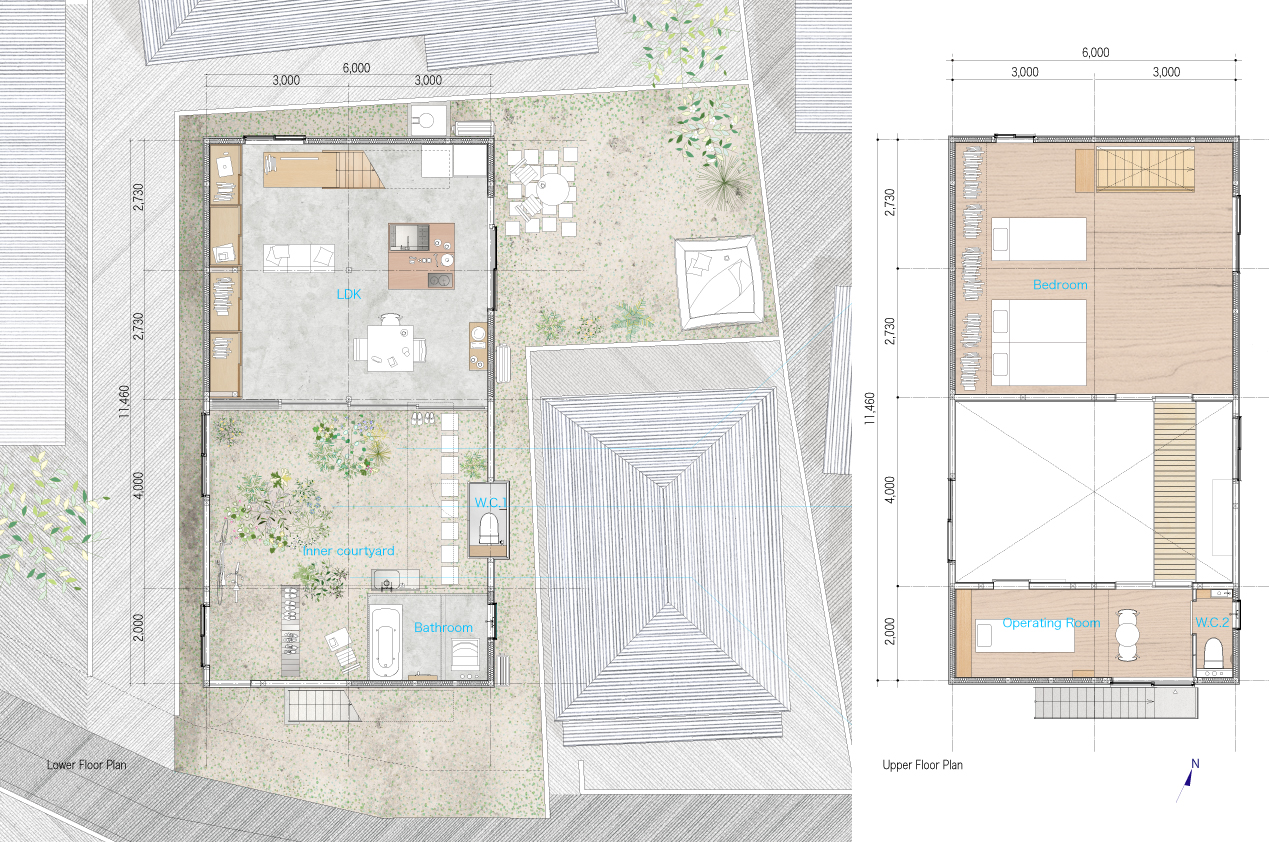
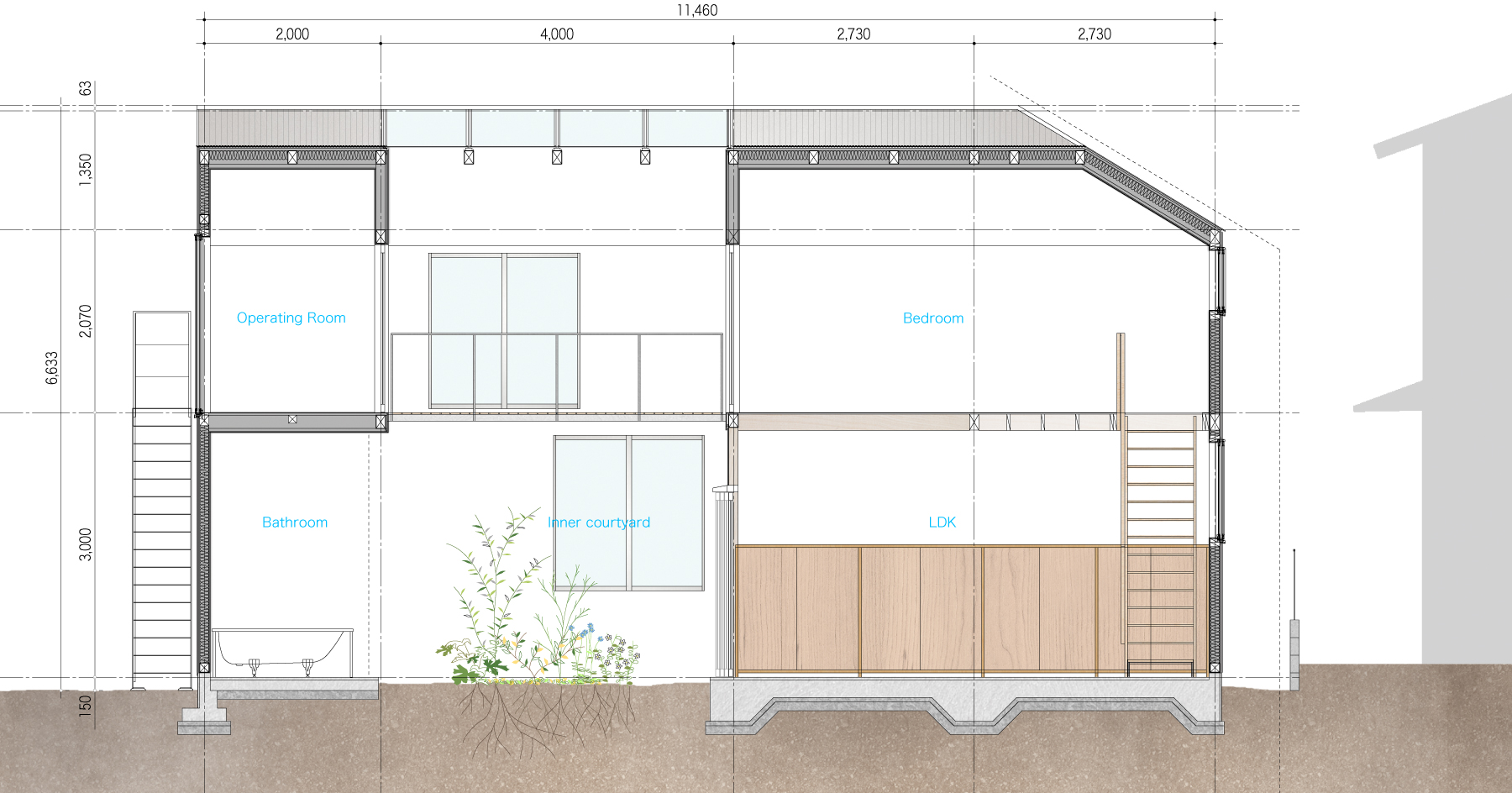
















「内庭」のある住宅
庭を内包した住宅の試みは、篠原一男や最近の同世代の諸作まで多数あるが、僕にとって最も印象深いものは、学生時代に訪れた知人のアトリエ兼住居だ。その家の床には土間があり、にがりを入れずに突き固めただけで、テーブルの足元からは草が生え、飲み残しのお茶を土間に撒くような暮らしぶりで、どこまでが庭でどこから室内なのか、判らなくなってしまうようなつくりだった。そうした内外が入り混じってしまったような、おおらかな空間をつくりたいと思い続けている。
この「月見山の住居」の建主はリビングなどを収めた母屋と「はなれ」の浴室を、タープを掛けた中庭で繋ぐような暮らしを望んでいた。ただ、この敷地では開口部に防火性能が必要で、法的に認められるアルミサッシは寸法やガラスの種別に制限があり、そんなサッシを介して繋がった庭や「はなれ」が、果たして一体のものとして感じられるか、疑問だった。そこで思い切って庭を住宅の内部に取り込んでしまうことで内庭としてしまい、内庭とリビングはシングルガラスの軽快な木製建具で、「はなれ」としての浴室は内庭の一部をカーテンで仕切ってつくり出すことにした。内庭のアルミサッシは常時開放して空気環境的には外部として使える。外気と常に繋がることで、巨大なトップライトがありながらも温室のように熱が篭もることを避けられるが、内庭の上部には有圧換気扇を設け、速やかに換気できるように準備した。L 型の敷地に長方形の平面を配置することで、周囲の建物に囲まれた中庭的な性格の外庭と、内庭の間に住空間が位置する。建具によって室内にも室外にも出来る内庭のアイデアは、同様の性格を持つ「伊丹の住居」のベランダでの試みからの延長だが、今回試してみて都市部の庭としての可能性を感じた。都市部の外部環境は日陰や風通しの悪いところも多く、蚊などの害虫が生息しやすいため、快適に庭で過ごすのはなかなか難しい。そういった虫を網戸によってフィルタリングした内庭は快適に過ごすことができる。また、ある程度周囲に対して開いていてもプライバシーが損なわれない内庭があることは、とかく閉じがちな都市部の住宅にとって重要な内外のインターフェースとなり、室内気候的にもコミュニケーション的にも重要な中間領域となるのではないかと思った。
House in Tsukimiyama
A House with a Courtyard
Many people, including Kazuo Shinohara and architects of my generation, have made houses that contain gardens, but to me the most impressive example was an acquaintance’s studio-cum-residence that I visited when I was in university. The floor of the house had simply been tamped down without using any hardening chemicals or special techniques. As grass grew up around the table legs, you could sprinkle your leftover tea on the ground. The design made it difficult to decide where the garden ended and the interior began. Since that experience, I have often thought about that I would like to create a relaxed space in which interior and exterior intermingle.
The client in this project, House in Tsukimiyama, was hoping for a lifestyle in which a main building, containing the living room and other rooms, would be linked to an annex-style bathroom by a tarp-covered courtyard. However, as it was necessary for the door to function as a fire exit, there were legal limitations regarding the size and type of glass that could be used. The question was whether the garden and the annex, connected via the door, would then seem unified. To deal with this situation, I took the bold move of incorporating the garden into the house and making a courtyard. Between the courtyard and the living room, we used a door with single-pane of glass and light wooden fittings, and in the bathroom annex, we used a curtain to partition it off as a section of the courtyard.
The aluminum-sash door in the courtyard can be opened at any time to let fresh air in from the outside. Creating a constant link to the outside air made it possible to avoid a stuffy hothouse-type atmosphere despite the huge top light. A pressure ventilator is installed above the courtyard, allowing it to be quickly ventilated.
By distributing the rectangular planes on the L-shaped site, we positioned the living space between the outer courtyard, which has the character of an inner courtyard surrounded by neighboring buildings, and the Inner garden. The idea of creating an inner garden that could be inside or outside depending on the furniture, is an extension of the verandah I made for House in Itami, which has a similar character.
The Tsukimiyama project made it clear how much potential there is for urban gardens. The external environment in an urban area often lacks shade and proper ventilation, and because it is also prone to be a habitat for mosquitoes and other pests, it is difficult to spend a comfortable time in the garden. But by using a screen to filter out the insects, the courtyard becomes a comfortable place. Moreover, the fact that a courtyard is to a certain extent open to the environment without impairing privacy, makes it an important interface between the inside and outside in an urban house, which tends to be rather closed. The courtyard also functions as an important intermediate space, both in terms of the indoor climate and communication.
—
x Close
タト